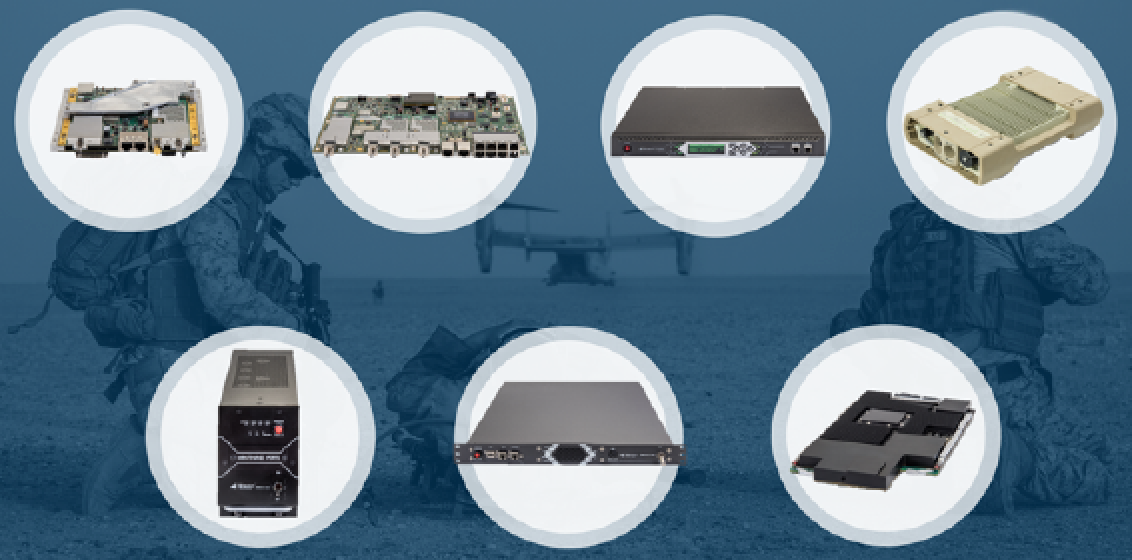Recent headlines concerned the identification of a Russian crime syndicate as the perpetrators of a cyberattack on a key U.S. pipeline, forcing the shutdown of the pipeline for multiple days and resulting in increased prices for American consumers.
If this is the state of cybersecurity in the commercial world, can the U.S. Department of Defense (DoD) really rely on commercial technology? Is the pace of innovation really faster in the commercial world?

The answer: Definitely maybe!
Creating products in the high-tech space is endlessly fascinating. Innovators need to clearly understand the challenges customers are facing and will likely face in the future as well as the solutions currently available and in use. However, the industry also needs to understand technology trends and how new innovations can be applied to both current and future problems to develop novel solutions for customers.
Although it is possible for a commercial company to create innovative solutions for the U.S. DoD, some specific capabilities are required‘.
The first key requirement in developing new technical capabilities is understanding the problems facing the end-user community.
Some problems appear in both the commercial SATCOM and the Defense space.
For instance, all end-users seem to have an insatiable demand for anywhere, anytime connectivity. The need for faster speeds is universal. However, for the Defense community, speed must be absolutely combined with reliable security.
In many cases, protecting the communication link using Transmission Security is essential, even if it means a slightly slower connection. Known as TRANSEC, this technology protects the end-user in numerous ways, including masking when critical communications activity occurs and preventing man-in-the-middle attacks, neither of which preventing man-in-the-middle attacks, neither of are concerns for the typical, commercial customer.
Another common demand is clear communications. RF interference is definitely on the rise, especially with the terrestrial cellular network taking over satellite frequencies.
Most interference is unintentional, driven by human error in positioning or configuring the remote installation or random events such as a neighbor using a new arc welder. Generally interference is also a nuisance.
The situation in the Defense world is different. Unintentional interference can delay completion of a mission.
However, intentional jamming is a serious concern that can completely block communications and disrupt a mission. Defense end-users cannot wait for the interference to pass. They need aggressive options to cut out this interference to deliver the needed outcomes.
Although both user communities would agree interference is a problem, the magnitude of the impact is very different. One other demand is for cloud-based services. For commercial customers, leveraging the cloud often can be a path to flexible, innovative and cost-effective service. Using the cloud has some of the same potential advantages for Defense customers, although there do need to be additional precautions taken.
For instance, the most secure system is one that doesn’t connect to any other system — an air-gapped system. Connecting to the public cloud is the opposite of a secure, air-gapped system.
Cloud security is improving; however, the recent cyberattacks would suggest critical Defense communications should be handled in a private cloud or even a standalone mode. The increased use of zero trust security models is likely, along with ongoing information assurance, some of which will exist in the commercial world as well.
Finally, consider the need for a reduced size, weight and power (SWaP) footprint — minimized size and weight without increasing power.
In the commercial world, communication devices became considerably smaller, but the typical installation doesn’t have the space limitations of some Defense installations.

iDirectGov’s 9-Series product family.
Certainly, there are situations in the commercial arena where all of the satellite ground equipment, including the antenna, must be carried up a mountain, making weight important but still not critical.
In comparison, many Defense use cases will occur in environments where space and power are limited. End- users must be able to transport the equipment by themselves and it will have to fit into already constrained vehicles. Pure, commercial solutions don’t have many of these types of requirements.
Understanding customer needs in both the commercial and Defense space starts in the same way — listening to customers. It’s essential to understand what success looks like as well as learning the pain points. It is easier, however, for engineers to understand the use cases and context in the commercial world — after all, they too are consumers of many of these capabilities.
This requires additional effort to ensure engineers understand the Defense environment. Some of this understanding can be achieved by reviewing and developing to the stringent U.S. DoD standards. Unlike the standard commercial requirements, Defense solutions must meet a detailed specifications list.
These specifications range from operating temperature range to conformal coatings and tamper resistance. All of these specifications can add complexity relative to a standard commercial solution. Additionally, hiring veterans who have actual field experience can substantially improve the effectiveness of the solutions by providing a three- dimensional perspective on use cases.
While accepting there are clear differences between commercial and Defense capabilities, one can easily note there is some commonality in requirements. However, is that enough to say commercial innovation is more effective than purpose-built, Defense solutions?
Commercial development will absolutely work for Defense if the architecture is built with the correct criteria. Many Defense requirements must be built into the communications platform directly from the beginning, rather than added as a feature later.
The architectural framework must account for the Defense specifications to coexist or to enhance the commercial capabilities. Similarly, the individual components must be selected to meet the stringent Defense standards. Still, elements such as waveforms and quality of service (QoS) methodologies can be shared.
What about purpose-built solutions? There are certainly many instances where purpose-built solutions are essential, as there are no actual parallels in the commercial space. These products are so distinct they cannot even be built on top of a commercial solution.
In the SATCOM arena, however, giving a problem statement to the architects and engineers at a commercial company allows them to leverage all of their knowledge to find creative ways to solve the problem.

Purpose-built solutions can sometimes be overengineered and, therefore, can be expensive as the solution is essentially prescribed, rather than enabling the contractor to use the most effective methods to solve the problem statements.
In conclusion, Defense solutions should leverage the expertise of commercial companies. The responsibility of the U.S. DoD and other Defense customers is to leverage commercial companies and their developments to ensure they select the correct solutions — those solutions being commercially developed solutions that are customized to meet and, yes, even exceed Defense requirements.
https://www.idirectgov.com
Karen Emery serves as Senior Director of Product Management for iDirect Government (iDirectGov), a U.S. corporation that is a trusted partner of the U.S. government and has been for more than 18 years.

All its employees are U.S. citizens, with a third being U.S. military veterans and more than 60 percent holding U.S security clearances. All Defense-grade products sold by iDirectGov are designed, developed, assembled, programmed and verified within the
United States. In this role, Emery seeks to anticipate customer needs and drive the product strategy, development and timely launch of new capabilities. She has more than 20 years in product engineering, design and management, as well as operations experience.
Honoring The Workplace
iDirect Government has been named the Washington Business Journal’s (WBJ) Best Places to Work for the large company category. The WBJ acknowledges the top 100 Greater Washington, D.C. companies for their workplace excellence based on survey responses from their respective employees.


“What a tribute it is to our great team members that we are recognized for the third consecutive year as one of the best places to work in the greater Washington, D.C. area,” said John Ratigan, president of iDirect Government. “We pride ourselves on hiring smart people who bring their unique talents to the team to drive excellence in creating the utmost reliable SATCOM solutions for our military, homeland security, first responder and other government users.”
iDirectGov employees are all U.S. citizens, with a third being U.S. military veterans and more than 60 percent holding U.S. security clearances.
“Our employees are the hallmark of our operations and enjoy a healthy work-life balance,” Ratigan said. “Recently, thanks to obtaining and retaining the best employees, we delivered software with the most advanced security features available to the government SATCOM market, including information assurance (IA) and signal excision technology. It’s exciting endeavors such as this that our dedicated team members thrive on and make iDirectGov a great place to work.”
The honorees were announced at a virtual ceremony and are listed on the Washington Business Journal Lists.
This award recognition adds to iDirect Government’s 2021 Innovation Award for Cyber Tech. The Northern Virginia Chamber of Commerce award recognizes iDirectGov’s ingenuity with its Communication Signal Interference Removal (CSIR™) technology that helps the military carry out their missions across the globe. iDirectGov was honored with this award win at the Mid-Atlantic honored with this award win at the M Innovation Celebration ceremony.


